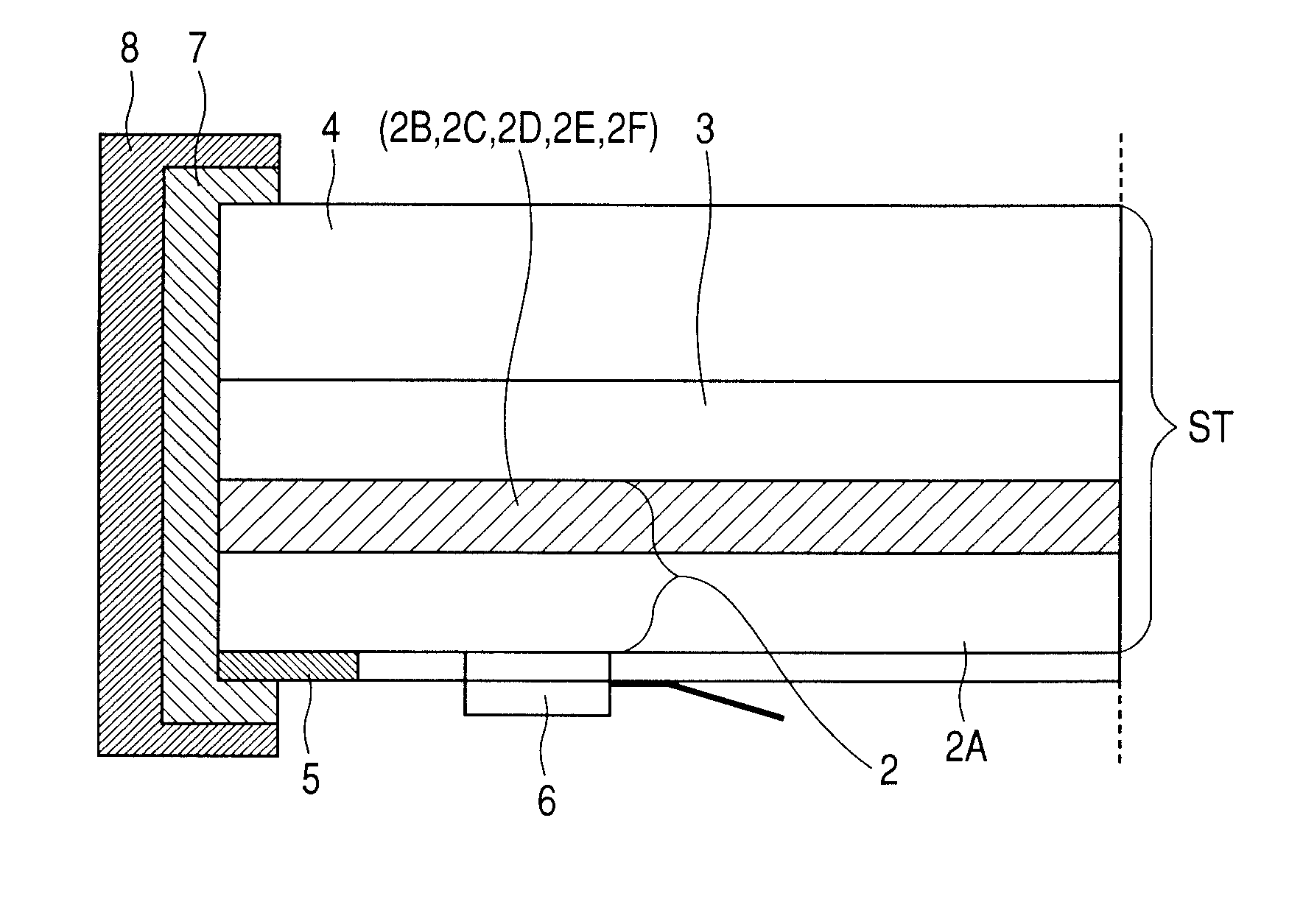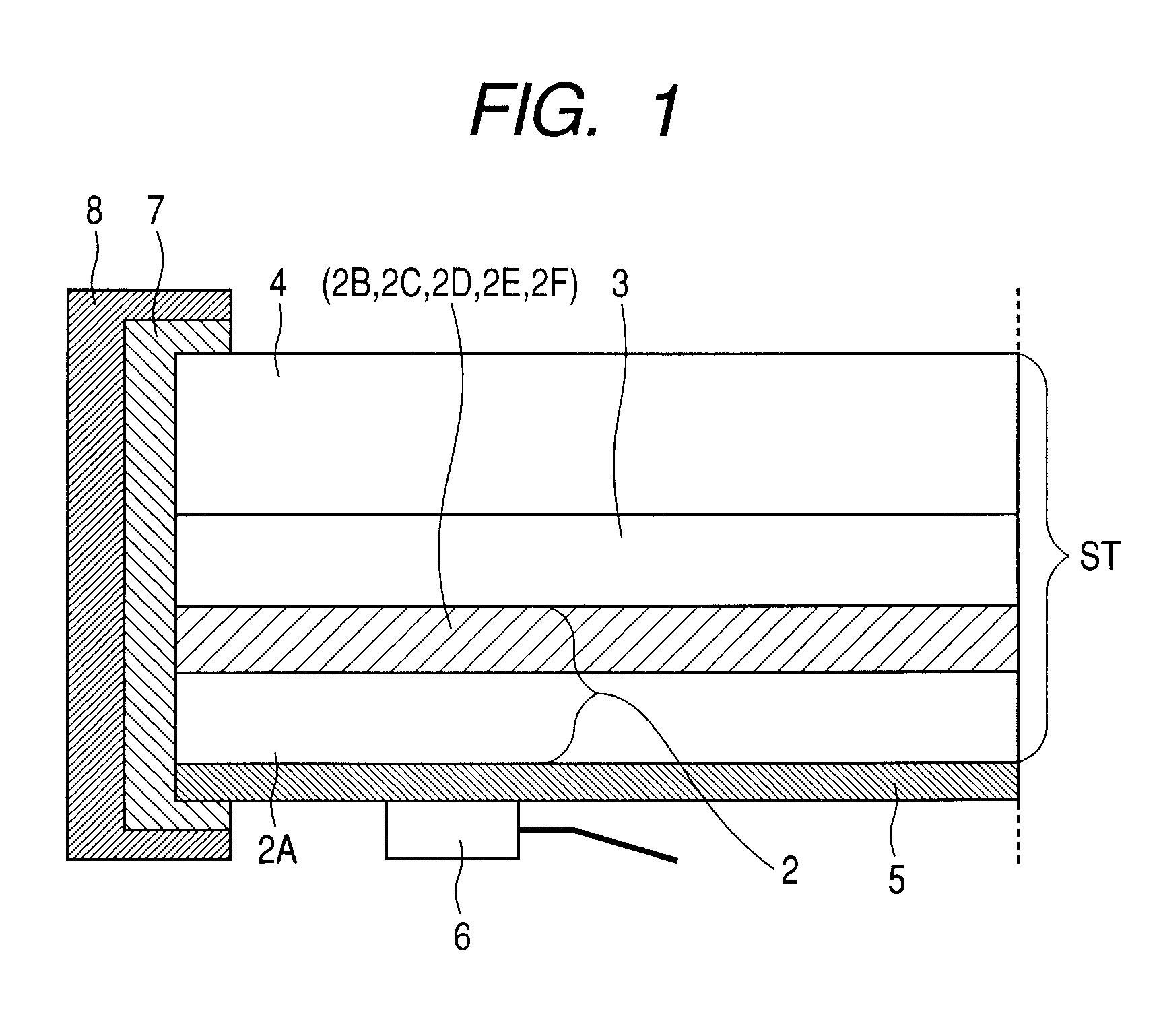CIS based thin-film photovoltaic module and process for producing the same
a thin-film photovoltaic module and thin-film technology, applied in the field of cis-based thin-film photovoltaic modules, can solve the problems of eva resin, eva resin, low cost, few reports on the durability of modules, etc., and achieve the effect of preventing bubble inclusion in a cis-based thin-film photovoltaic circuit, long-term durability, and low cos
- Summary
- Abstract
- Description
- Claims
- Application Information
AI Technical Summary
Benefits of technology
Problems solved by technology
Method used
Image
Examples
example 1
[0060]Still another feature of the CIS based thin-film photovoltaic module 1 of the invention resides in that a high-capacity storage capacitor 9 is disposed on that side of the glass substrate 2A which is opposite to the CIS based thin-film photovoltaic circuit, as shown in FIG. 4. The storage capacitor 9 has a capacity corresponding to the power-generating ability of the CIS based thin-film photovoltaic circuit 2 on the glass substrate on which the capacitor 9 is disposed. The storage capacitor 9 is disposed for each module 1. In the case where a storage capacitor having a storage capacity higher than the power-generating ability of the CIS based thin-film photovoltaic circuit 2 is used, this capacitor is disposed in combination with CIS based thin-film photovoltaic modules 1 having no storage capacitor as shown in FIG. 1 according to the storage capacity of the capacitor. The CIS based thin-film photovoltaic module 1 having the storage capacitor 9 may be installed near the equipm...
example 2
[0061]A further feature of the CIS based thin-film photovoltaic module 1 of the invention resides in that the CIS based thin-film photovoltaic module 1 having the storage capacitor 9 can store, in the daytime, the electricity generated from light by the CIS based thin-film photovoltaic module 1 and store inexpensive nighttime electricity in the night. Thus, a reduction in maintenance cost after installation can be attained.
PUM
| Property | Measurement | Unit |
|---|---|---|
| temperature | aaaaa | aaaaa |
| conductivity | aaaaa | aaaaa |
| size | aaaaa | aaaaa |
Abstract
Description
Claims
Application Information
 Login to View More
Login to View More - R&D
- Intellectual Property
- Life Sciences
- Materials
- Tech Scout
- Unparalleled Data Quality
- Higher Quality Content
- 60% Fewer Hallucinations
Browse by: Latest US Patents, China's latest patents, Technical Efficacy Thesaurus, Application Domain, Technology Topic, Popular Technical Reports.
© 2025 PatSnap. All rights reserved.Legal|Privacy policy|Modern Slavery Act Transparency Statement|Sitemap|About US| Contact US: help@patsnap.com



